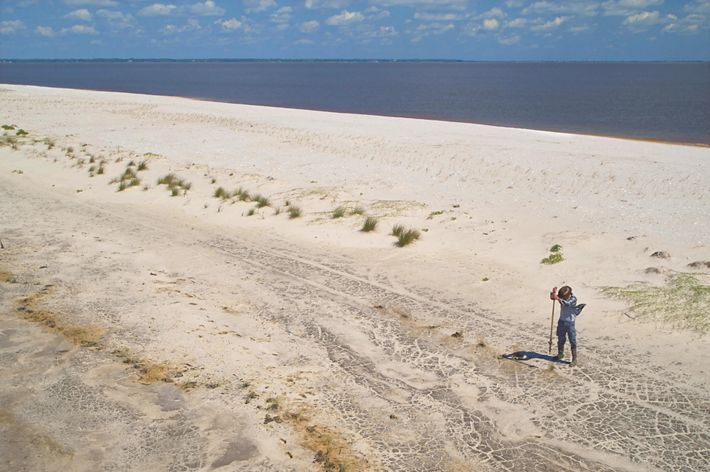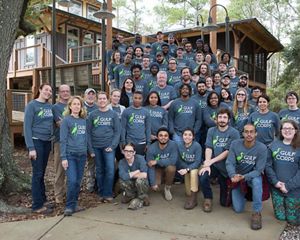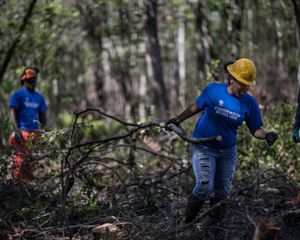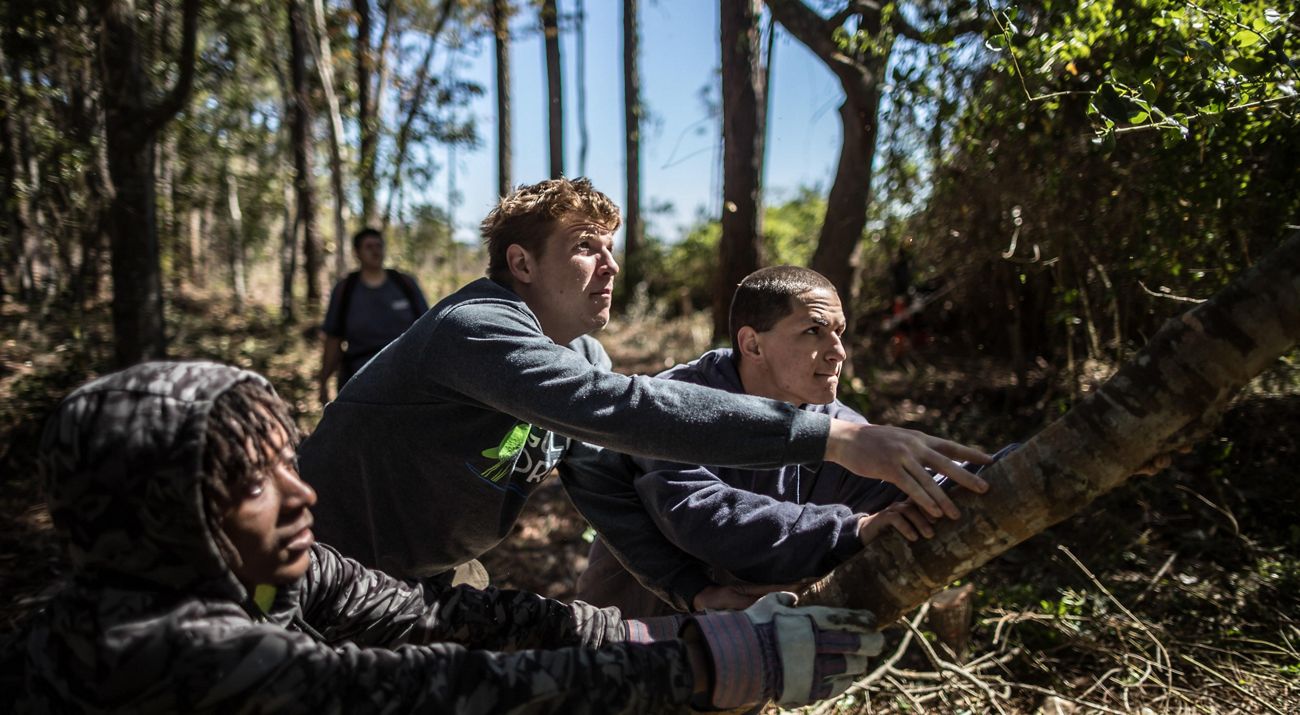
A New Meaning for Restoration
Strengthening the battered Gulf Coast gives young people real jobs and a path forward
One sunburnt afternoon in April, a jagged line of GulfCorps members were planting sea oats and other erosion-preventing grasses along the shore of this uninhabited sandbar of an island. They were changing more than the landscape.
They wore floppy hats, sunglasses and chatted about movies and music. They slathered on sunscreen. There were ten of them, young people between the ages of 18 to 25. They were the only ones on the island. The wind whipped words out of mouths and sent conversations flying. The outlines of Pascagoula shimmered in the heat on the far side of four miles of water.
“This is what I’m passionate about,” said Hunter Ferguson, an exuberant 24-year-old, with two dozen tattoos, white plugs in his ear lobes and a shock of blond hair. He’s putting his life back together after years of drug abuse, homelessness and arrests. “I’ve really gotten tied into looking at the world around me, not just driving by it, you know?”
Dana Sullivan, a 22-year-old a few steps down the line, jabbed her dibble into the sand, making a hole a few inches deep. She knelt, dropped in a plant and carefully packed the soil around it. Her father died young and her mother left her to fend for herself at 16.
“I know I like helping people, and I know I like working outside,” she says, over the wind. “I could go in a lot of different directions.”
Hunter and Dana are part of the remarkable debut class of GulfCorps, a three-year, $7 million project (funded by the RESTORE Act and NOAA from the 2010 Deepwater Horizon oil spill), a new program run by TNC to help the battered Gulf Coast and the young people whose lives depend on it.
Since the program began in January, the 50 GulfCorps kids across the five Gulf states accomplished a lot, working at 24 restoration sites over the spring and summer. They plucked thousands of invasive apple snails from rivers, cut brush and bramble in State, Federal, Local and NGO land, replaced aging boardwalks through marshlands, and worked on Round Island’s leeward shore.

Now, buoyed by that success, the program is doubling to 50 sites and nearly 100 workers this fall and winter with still more growth projected, says Jeff DeQuattro, TNC’s GulfCorps program director.
“At first, GulfCorps was all about engaging communities that do not typically attract many conservation professionals. Although we are still doing that, the word is out about our program and recruits are coming to us. People want to work in nature.”
Just a few months into the program, Ferguson and Sullivan are bidding for team leader jobs, which means a raise from $9 to $11 per hour, a step up in responsibility and a newfound degree of professionalism. Lauren Kissel, a graduate in marine biology from the University of Southern Mississippi, has been promoted from team leader to program manager of conservation at Climb CDC, TNC’s partner in running the Mississippi GulfCorps crews. Climb is one of four groups adding a second crew in Year Two of the grant.
The People of GulfCorps
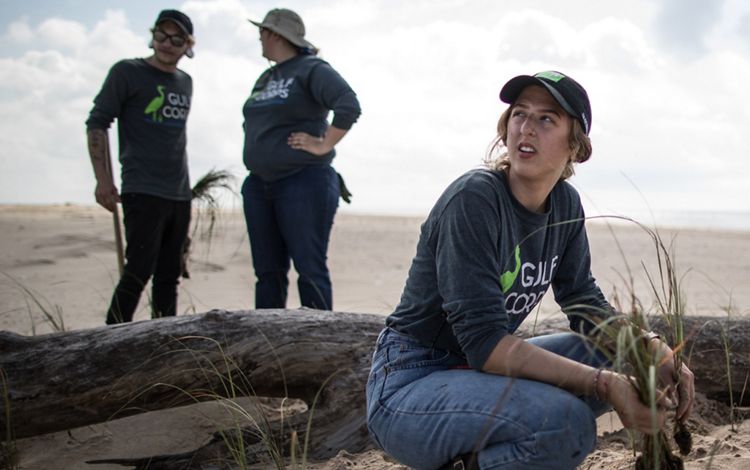
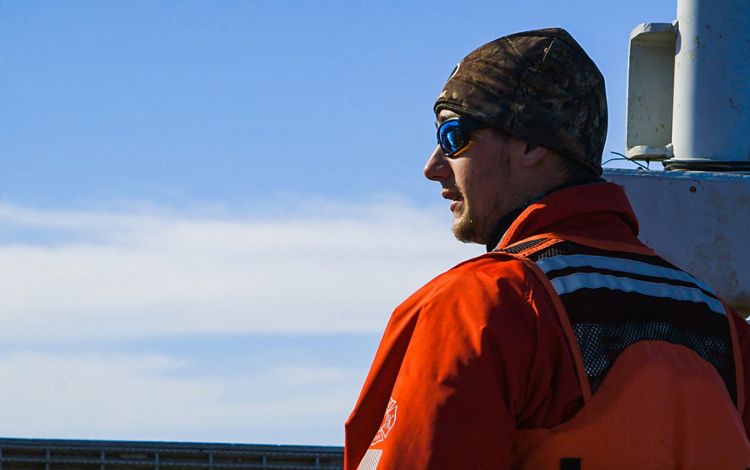

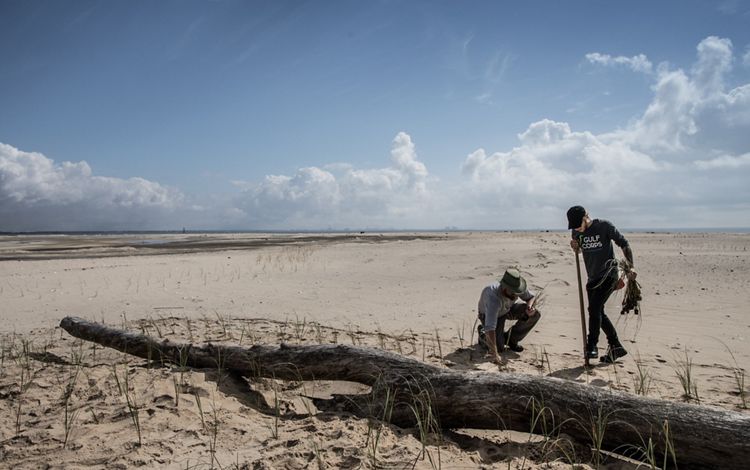
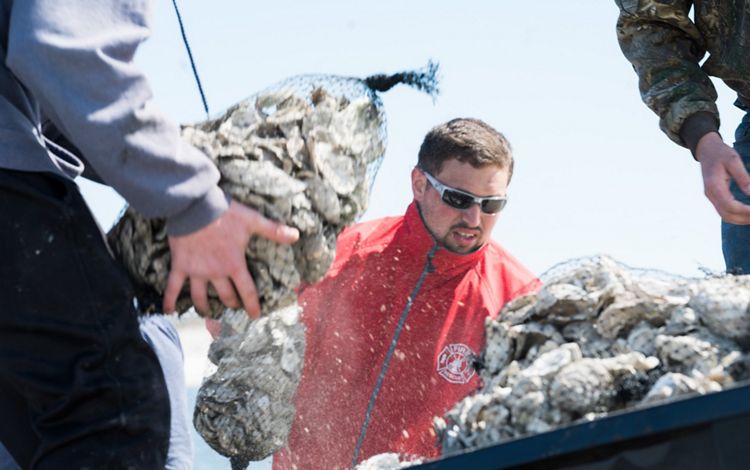
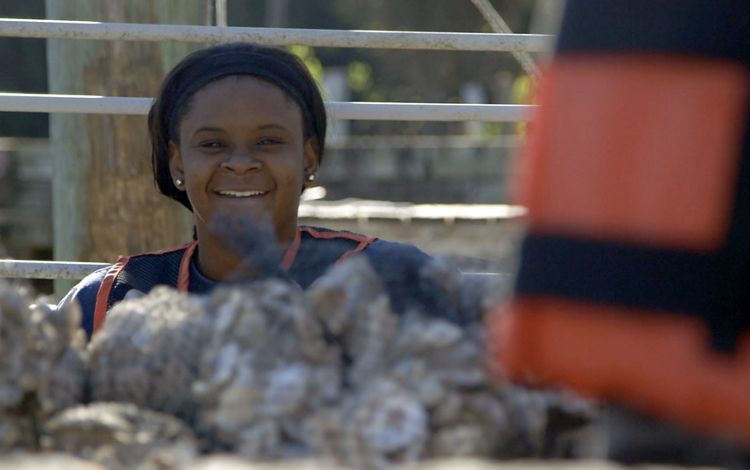
A few dozen miles east, working for the GulfCorps Alabama program, 21-year-old Eric Lucas has moved from crew member to assistant team leader. After hours, he pursues his artwork and sketches, selling pieces one by one, making plans for a graphic arts career.
On the self-described “Forgotten Coast” of northwest Florida, 25-year-old Holden Foley has gone from being unemployed and homeless to the team's crew manager and anchor of the local GulfCorps team. He and his wife, Tristen, are rehabbing their trailer in Apalachicola and making plans to buy it. He’s working on getting his firefighters card and his contractor’s license.
“The education system here isn’t that good, and there’s not much to do but get in a lot of trouble,” he says, describing the perils beneath the surface appearance of a small, sleepy Southern town. “Some kids get on meth. I see some of my friends from high school, they’re on that stuff. I hardly recognize them anymore.”
The land south of I-10, the east-to-west Interstate that unofficially demarcates the coastal regions of the Gulf states, often seems to be a state of its own, rather than parts of others. Biloxi has more in common with Mobile and Pensacola than it does with any city in the Mississippi Delta, for example, and the lives of young people here reflect that. The ever-present bays and estuaries of the Gulf with their beautiful barrier islands, winding rivers, broad salt marshes and abundant fish and wildlife are intermixed with shipyards, deep-sea fishing ventures, great restaurants and world-class Mardi Gras celebrations. It is a different kind of deep South than you find north of I-10—a complex place defined and described in various ways by artists like Walter Anderson, scientists like E.O. Wilson, and in Jack Davis’s recent Pulitzer Prize-winning history of the Gulf.
GulfCorps was created with a sliver of the $5.5 billion in civil penalties that BP is paying after the 2010 spill. It’s a collaborative effort between TNC and dozens of federal, regional and local partners, including NOAA, The Corps Network and the Student Conservation Association.
GulfCorps — Year 2 Projects Explore this map of current GulfCorps projects and the places we work to protect.
“It’s a conservation program at heart, matched with kids who may not often think of the environment as a career,” DeQuattro says.
In many ways, it’s the same type of program that teens and twenty-somethings have been doing across the nation since Franklin Roosevelt created the Civilian Conservation Corps in the depths of the Great Depression. Then, it was a way to get young men (no girls allowed) a job, a place to stay and perform much-needed work in national and state parks. The pay was modest, and workers were required to send most of it home to their families. It was a government program that improved national property and helped families during the nation’s worst economic crisis.
Quote: Jeff DeQuattro
It’s a conservation program at heart, matched with kids who may not often think of the environment as a career.
Today, GulfCorps is actively reaching out to young people to do conservation work along the coast. Kissel, for example, began her post-graduate career by working for the State. She started as a team leader for GulfCorps in January. Now, after being promoted to her new position at Climb CDC, she’s made a huge step up to a leadership position.
Crew members often share backgrounds, confidences, meals, rides to work and, sometimes, living quarters. In the Florida GulfCorps team, also known as the Conservation Corps of the Forgotten Coast, the ten kids in the program went to Franklin County High School and have known one another for years. This past spring, they reported each morning to the offices of the Franklin’s Promise Coalition, a network of grass-roots groups that work with at-risk families. The coalition worked out of a defunct high school with a food pantry in an old classroom, the former football field going to seed. When Holden Foley, now the team leader, was homeless, he lived in one of the abandoned classrooms.
Joe Taylor, who administers the GulfCorps program as part of his work at Franklin’s Promise, says that many of the problems local kids encounter are decades deep: “When you and your family have been living a particular way for a long time, it’s very difficult to change. Particularly when there’s no apparent way to change.”
Apalachicola, the main town in the area, is a fishing hamlet that has been devastated by the collapse of the oyster harvest that began in 2012. The population of the county is just over 11,000, set between the Apalachicola Bay on one side and the Apalachicola National Forest on the other.

“Law enforcement, fishing, the forestry service,” said Foley, one bright, chilly day in April. “That’s pretty much it for jobs around here.”
On this particular day, he and his crew were rebuilding a boardwalk at the Apalachicola National Estuarine Research Reserve. The labor was nothing fancy—prying off rotting boards, cutting new ones, nailing them into place and moving to the next board.
“We’re gonna’ need another load (of lumber),” he said late in the morning, so he and four others piled into the truck and headed over to Ace Hardware to pick up 80 boards of 2x6x12s. It was a quick drive, three or four miles through sleepy residential streets.
Since they were passing by his trailer on the way back, they stopped for lunch.
Inside, it was cool, dim. A flat-screen TV sat in front of a couch, the kitchen area a few steps to the left. Tristen was there, waiting to go in to start her late shift at a nearby hospital. The young couple are working hard on a down-to-the-studs rehab of the trailer, and applying their $450 monthly rent to an agreement to eventually buy it.
While the rest of the guys sprawl on couches and chairs to wolf down lunch, the couple gave a visitor a quick tour, showing off the painstaking plumbing and grouting work they’re doing in the main bathroom. Holden works on the project so late on some nights that a neighbor flicks their porch light on and off to let him know it’s time to knock it off.
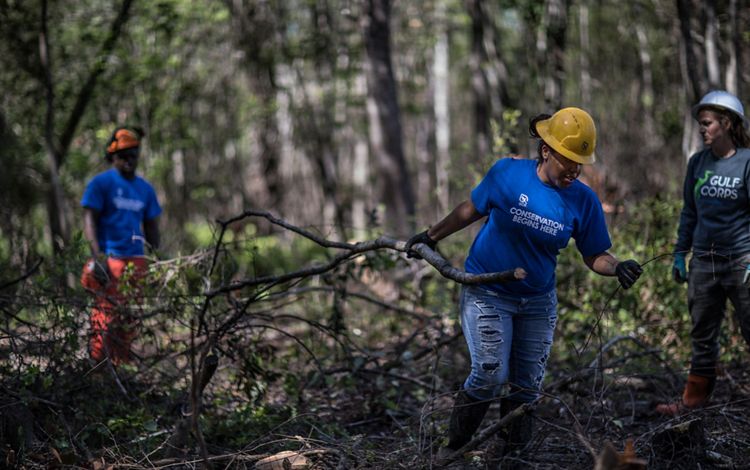
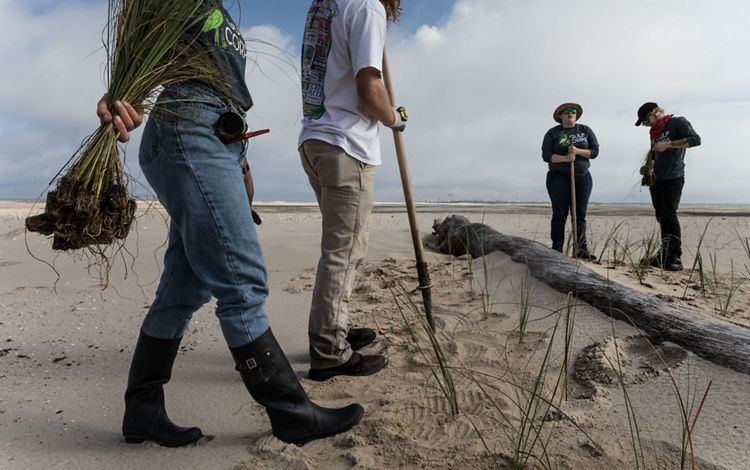
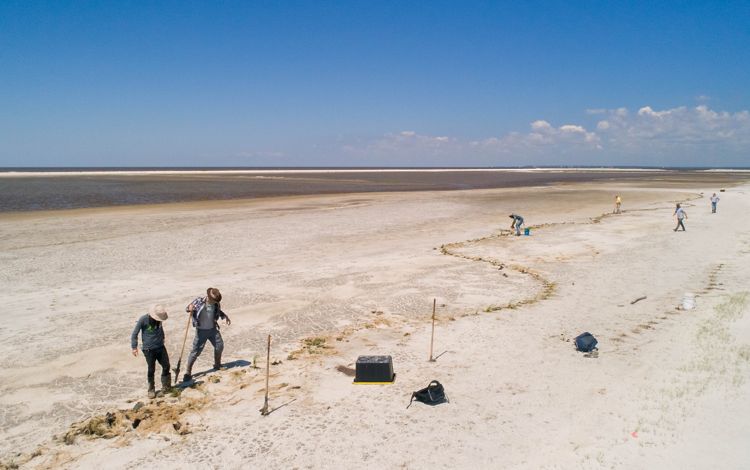
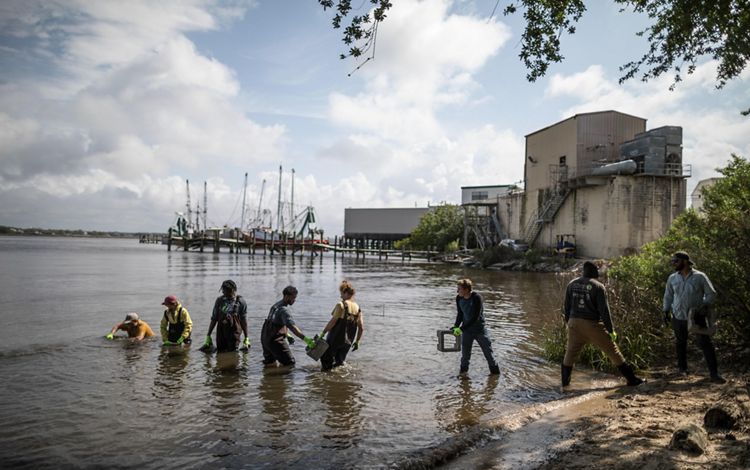
In Alabama, where the GulfCorps crew is operated by the Student Conservation Association, Eric Lucas spent much of this season running chainsaws, cutting brush and hauling trees. The job was to mark a State property line on a couple hundred acres of a Pitcher plant bog. Nearby was an open field of thousands of white-topped pitcher plants, their inner tubing slick with a gooey liquid that traps unsuspecting flies and insects.
After work most days, he sketched. Cartoon figures in brightly colored Manga, real people in pencil and ink, street scenes. He drew on stray sheet of paper, in sketchbooks, on his iPhone.
His mom works at Winn Dixie; his dad, a dockworker, is on disability. When GulfCorps work stopped for several weeks over the summer, he got a job at the Mobile docks, unloading steel and wire shipments.
When he showed his drawings to professional artists at a recent convention in Mobile, they were impressed, he said.
“They had a lot of expensive equipment that I didn’t, but they were like, ‘This is very good to be doing on your phone.’ I’ve been in touch with a lot of them since. I’d like to work out a career in graphic arts, but I don’t really know how to get there.”
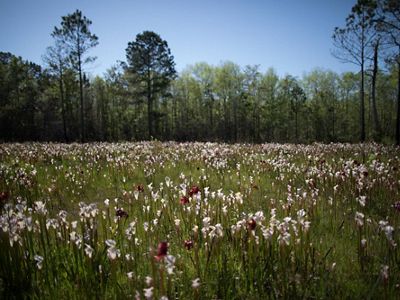
In Mississippi, GulfCorps has been a life-stabilizing job for Dana Sullivan.
After the death of her father and estrangement from her mother (who moved out west), she found herself alone and isolated at 16. On a rainy Saturday morning in Ocean Springs, she sat in the corner of The Finest Grind, her favorite coffee shop, and chatted about her life now.
She had a bright, sunny, flower-child vibe—quick smile, an easy laugh, long hair—a rock climber who spent a month climbing and traveling in Indonesia in 2017. The brightness of her disposition, how perfectly at home she looked in that cozy spot, belied the achievement of her being there at all.
Here’s how she summarized her life on her own at 16:
“I didn’t have a permit, a license, a car, a GED, a diploma. I walked to the DMV—it was three miles—and I got a permit. I walked back. Then I walked to McDonald’s and told the manager I needed a job. He said ‘Okay.’ I walked back and forth to work. It was like two miles. I became the ‘almost manager,’ but I didn’t want to be the actual manager, ‘cause then you’ll be there until you’re eighty.”
She walked to a GED training program until she earned that. A friend taught her to drive, and she got her license. She then added two more jobs and managed to find her paternal grandmother, who lived an hour away.
“She said, ‘Come live with us. We’re going to get you into college.’ ”
She did, enrolling in Mississippi Gulf Coast Community College. But she then developed a gall bladder disease, which wrecked her health.
“I lost forty-five pounds. I passed out in one of my classes. I was so malnourished. I just couldn’t eat.”
Still, she hung on, finally got a proper diagnosis, and was treated. Mended, she earned a pair of two-year degrees, in radiography and as a dental assistant. Then, working as a ropes-course instructor at the college, she met many of her future GulfCorps co-workers, who came through as part of a job-training program.
She signed on to the first class of GulfCorps. The work has given her a glimmer of something that seems to be pulling her into her future, and away from the tug of her past. She’s already in line for a promotion to team leader, another building block on the way to success.
Her future plans?
“Maybe working overseas, doing development work, something like that,” she says, letting the thought linger, smiling.
It’s a life in progress, and it’s getting better by the day.
The winter/spring term of GulfCorps started in September 2018.
NOAA Disclaimer Statement: This story was prepared by The Nature Conservancy about the GulfCorps Program, RESTORE Council award number IAACP17DC0030 and NOAA Restoration Center, U.S. Department of Commerce. The statements, findings, conclusions, and recommendations are those of the author(s) and do not necessarily reflect the views of NOAA, the U.S. Department of Commerce, or the RESTORE Council. This condition combines the requirements of the U.S. Department of Commerce Standard Terms and Conditions Section G.05.j.3 and the RESTORE Council.
THE BIRTH OF GULFCORPS
In the wake of the 2010 Deepwater Horizon oil spill, BP paid $5.5 billion in fines to repair environmental damage to the coastlines of the five Gulf states, with the federal RESTORE Act administering those funds. In late 2016, using a sliver of that money, NOAA sent out a request for proposals for a $7.5 million, three-year coastal restoration project. TNC GulfCorps program director Jeff DeQuattro and a team of cohorts (The Corps Network and the Student Conservation Association) were awarded the project and welcomed the first 50 young workers to an orientation session on Fairhope, Ala, on Jan. 7, 2018. The workers, aged 18 to 25, were recruited from local community development organizations and conservation corps. Their list of 24 work sites was drawn from RESTORE Council members appointed in each effected state. After a few weeks of training and project planning with partners, boots hit the ground in February, on projects from Apalachicola, FL to Galveston, TX. The program was so successful in its first, spring-to-summer term, that it is doubling in size, to 150 employees working on nearly 50 restoration projects, for the fall 2018/winter 2019 term.
